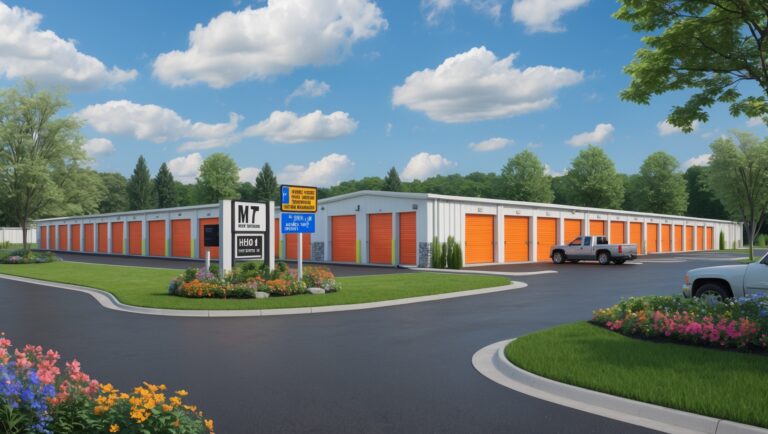How to Build a Profitable Moving Company Referral Network: Step-by-Step Strategies
Introduction: The Power of Referral Networks in the Moving Industry
In today’s highly competitive moving and storage market, word-of-mouth recommendations and trusted partnerships can make or break a business. While digital marketing and advertising are vital, many successful moving companies attribute a significant portion of their bookings to referrals. Whether it’s from real estate agents, property managers, local businesses, or past clients, a robust referral network is one of the most cost-effective and sustainable ways to grow your moving company.
But building and maintaining a profitable referral network is more than just exchanging business cards or hoping for a mention. It requires a systematic approach, strategic relationship-building, and a commitment to delivering outstanding service. In this comprehensive guide, we’ll take you step-by-step through the process of creating, expanding, and leveraging a referral network that drives real results for your moving business. We’ll cover everything from identifying the right partners to tracking performance and nurturing long-term collaborations. Whether you’re a start-up or an established operator looking to scale, these actionable strategies will help you tap into new revenue streams and stand out in your local market.
Why Referral Networks Matter for Moving Companies
High Trust, Low Acquisition Cost
Referrals come with built-in trust. When a client is recommended to your company by someone they already trust—like their realtor or landlord—they’re more likely to convert and less likely to shop around. This significantly reduces your customer acquisition cost compared to paid ads or cold outreach.
Consistent Lead Flow
Strong referral partnerships create a reliable stream of qualified leads, helping smooth out seasonal fluctuations and reducing the feast-or-famine cycle common in moving services.
Enhanced Reputation and Local Authority
Being the go-to mover for local professionals positions your brand as the trusted expert in your area, leading to more organic business opportunities and positive online reviews.
Step 1: Identify Potential Referral Partners
Key Referral Sources for Moving Companies
- Real Estate Agents and Brokers: They’re often the first to know when clients are planning to move and can refer you directly.
- Property Managers and Apartment Complexes: These professionals frequently assist tenants with relocations and move-ins.
- Self-Storage Facilities: Facility managers often recommend movers to clients who need transportation services.
- Local Businesses: Furniture stores, office supply retailers, and cleaning companies can all be valuable partners.
- Senior Living Communities: As seniors downsize or move into care, these facilities often seek reliable movers.
- Past Clients: Satisfied customers are a goldmine for future referrals.
How to Find Partners
- Research local real estate offices, property management firms, and storage facilities online.
- Network at chamber of commerce events, industry expos, and local business mixers.
- Leverage LinkedIn and community Facebook groups to identify professionals interacting with your target market.
Step 2: Craft Your Value Proposition
What Makes Your Moving Company Referable?
- Reliability and Punctuality: Partners want to know their clients will be in safe, professional hands.
- Consistent Communication: Quick response times and proactive updates build partner confidence.
- Specialized Services: Offer packing, storage, or specialty moving (pianos, antiques) to stand out.
- Exclusive Offers: Provide referral partners with discounts, priority scheduling, or custom packages for their clients.
Summarize your value in a concise pitch. Example: “We help your clients move stress-free with guaranteed on-time arrivals, real-time updates, and exclusive partner benefits.”
Step 3: Make the First Contact
How to Reach Out
- Email: Craft a personalized message introducing your company, your services, and how the partnership can benefit them and their clients.
- Phone Call: A brief, polite call can set you apart and start a real conversation.
- In-Person Visit: Bring branded materials (brochures, business cards) and offer to meet for coffee or at their office.
- Networking Events: Attend local business gatherings and industry meetups to build relationships organically.
Sample Outreach Email Template
Subject: Partnering to Provide Seamless Moves for Your Clients
Hi [Name],
I’m [Your Name] from [Your Company]. We specialize in stress-free, on-time moves across [Your City/Region]. I’d love to connect and explore how we can help your clients with exclusive moving services. Would you be open to a quick call or coffee next week? Looking forward to connecting!
Best,
[Your Name]
Step 4: Structure Mutually Beneficial Referral Agreements
Types of Referral Arrangements
- Simple Referral: Partner refers clients to your company, possibly in exchange for a flat fee or a reciprocal referral.
- Preferred Vendor List: You’re featured as a trusted provider on their list given to clients.
- Co-Branded Promotions: Joint marketing campaigns, such as flyers or email blasts, to both audiences.
- Commission-Based: A set percentage or fixed amount for every booked move originating from the partner.
Best Practices for Agreements
- Draft a simple, clear agreement outlining expectations, compensation, and communication protocols.
- Ensure compliance with local business laws and anti-kickback regulations.
- Commit to tracking each referral’s source for accurate payouts and reporting.
Step 5: Nurture and Maintain Referral Relationships
Consistent Communication
- Send regular updates to partners about new services, seasonal promotions, or company milestones.
- Check in periodically to ask for feedback or offer support.
- Share positive stories of clients they referred (with permission).
Recognition and Appreciation
- Thank partners for every referral—personally and promptly.
- Offer small tokens of appreciation, such as gift cards, holiday baskets, or event invitations.
- Spotlight standout partners on your website or social media (with their consent).
Exclusive Partner Resources
- Provide partners with dedicated contact information for urgent needs.
- Create partner-only materials: checklists, moving guides, or co-branded info sheets for their clients.
Step 6: Track, Measure, and Optimize Your Referral Program
Referral Tracking Methods
- Use CRM software to log referral sources for each booking.
- Assign unique codes or links to each partner for lead attribution.
- Maintain a simple spreadsheet if software is not available.
Key Performance Indicators (KPIs)
- Number of referrals received per month/quarter
- Conversion rate of referred leads to booked jobs
- Total revenue generated from referral sources
- Partner satisfaction (measured via surveys or informal feedback)
Continuous Improvement
- Analyze which partners and channels deliver the most value.
- Refine your outreach and incentives based on what works best.
- Ask partners for suggestions to strengthen the relationship and improve client handoffs.
Step 7: Expand Your Network with Advanced Techniques
Host Joint Events and Workshops
Co-host moving seminars, home-buying Q&As, or packing demonstrations with realtors and storage facilities. These events build authority, generate leads, and cement relationships.
Leverage Social Proof
- Collect and share testimonials from referral partners and their clients.
- Case studies highlighting successful moves driven by referrals can attract more partners.
Build an Online Partner Portal
If you have the resources, create a section on your website where partners can log in to submit referrals, access marketing materials, and track rewards or commissions.
Common Pitfalls to Avoid in Building Referral Networks
- Neglecting Follow-Up: Failing to thank partners or report on referrals undermines relationships.
- Overpromising and Underdelivering: Only commit to what your team can consistently provide.
- Ignoring Legal Guidelines: Some states regulate referral fees—always ensure compliance.
- One-Sided Partnerships: Seek ways to add value to your partners, not just extract leads.
- Inconsistent Service: Every referred client is a reflection on your partner—maintain high standards.
Case Study: Real World Results from a Successful Referral Network
Background: ABC Moving started partnering with local real estate agents and storage facilities in 2020. They offered agents a dedicated move coordinator, co-branded welcome packets, and a modest referral incentive per booked move.
- Within 12 months, referral-based leads grew from 10% to 38% of total volume.
- Average customer satisfaction scores increased, as referred clients arrived better prepared and more trusting.
- Several partners became advocates, sharing ABC Moving’s services at their own industry events.
This example demonstrates the compounding benefits of a well-structured, mutually beneficial referral network.
Conclusion: Turning Referrals into Reliable Revenue
Building a profitable referral network isn’t a one-time project—it’s an ongoing investment in trust, service, and strategic collaboration. By systematically identifying ideal partners, crafting compelling value propositions, and nurturing relationships through clear communication and mutual benefit, your moving company can unlock a steady stream of high-quality leads that advertising alone can’t match. Remember to track your results, refine your approach, and always put your partners’ reputations first. In doing so, you’ll not only grow your bookings but also become a valued member of your local business community.
The moving industry will always be personal and relationship-driven. While digital marketing and search optimization matter, it’s the referral network that brings you “warm” leads—people already inclined to trust your team. Start small, be consistent, and measure your progress. Over time, your referral network can become your company’s most reliable and cost-effective growth engine. By focusing on service, transparency, and real partnership, you’re setting your business up for long-term success in a competitive market.






